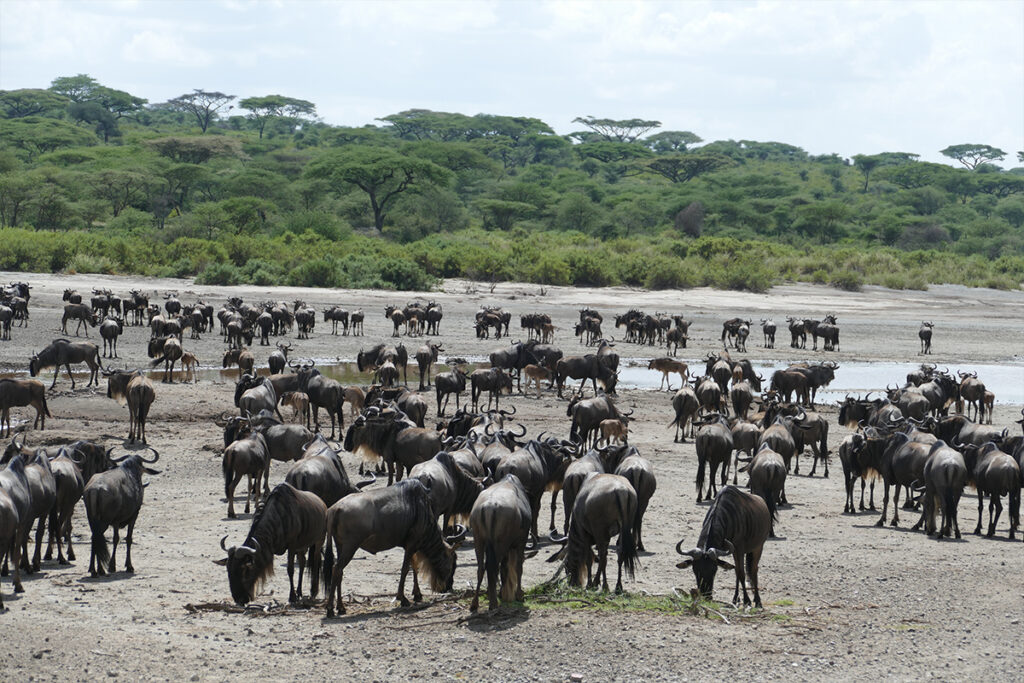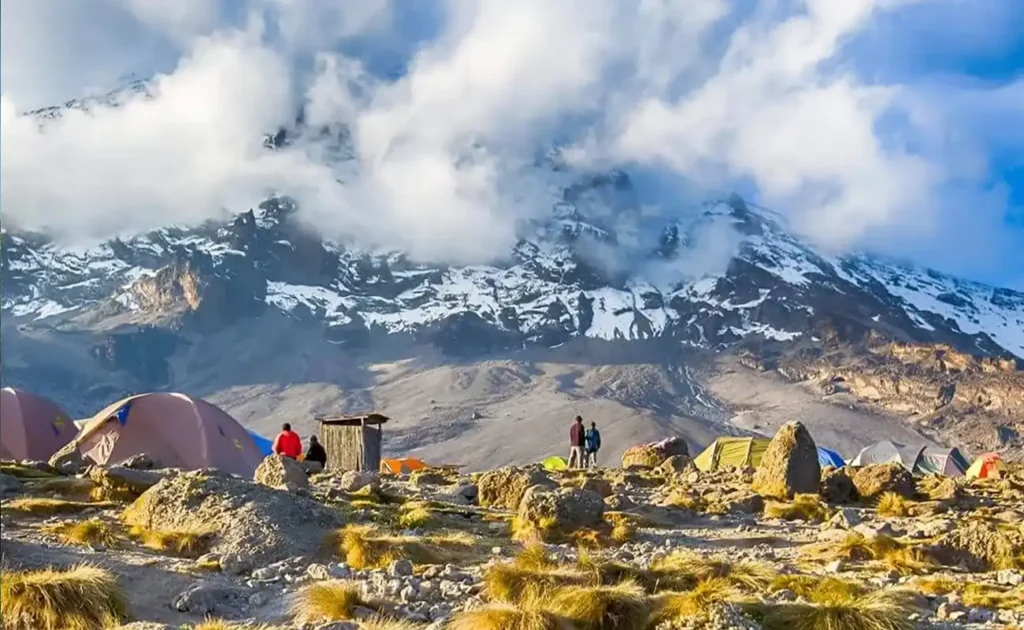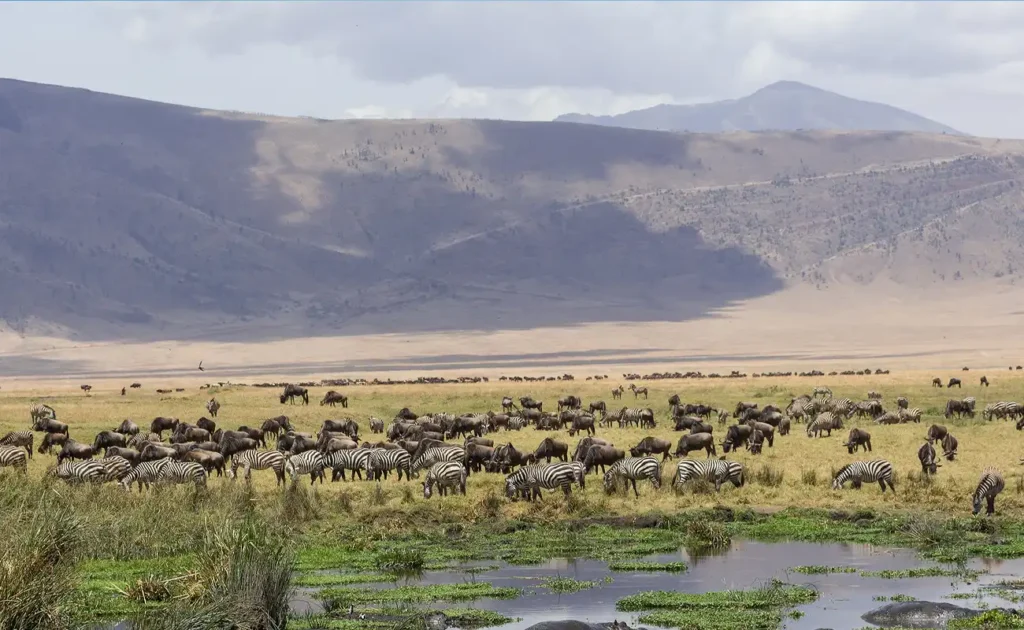Over 30,000 adventurers set their sights on Mount Kilimanjaro each year, drawn by its breathtaking views and the allure of conquering Africa’s highest summit. Choosing the best route isn’t just about the journey—it’s also about the experience it offers. While Marangu Route once held the crown for its nickname “Coca-Cola Route”, due to its huts and relative ease, modern climbers often favor the scenic Machame or Lemosho Routes.
The Machame Route, dubbed the “Whiskey Route”, is renowned not only for its dramatic landscapes but for its longer timeframe allowing better acclimatization. Meanwhile, the less-trodden Lemosho Route offers exceptional privacy and breathtaking vantage points as it weaves through lush rainforests and across the Shira Plateau. Interestingly, the Northern Circuit, being the longest route, ensures the highest success rate for summit achievement due to its gradual climb and isolated paths. Each route holds its unique challenges but provides distinct appeals that cater to both novices and seasoned climbers.

What are the best routes for climbing Kilimanjaro?
The Machame Route, often called the “Whiskey Route,” is a favorite among climbers due to its stunning views and varied landscapes. This way lets hikers experience great scenery while spending more time on the mountain. It helps with better acclimatization, reducing the risk of altitude sickness. Climbers experience a physical challenge, but the beautiful routes make it worth it. Moreover, the path passes through different ecosystems, from rainforest to alpine desert.
The Lemosho Route is gaining popularity for its beauty and fewer climbers. Starting on the western side of Kilimanjaro, it takes you through lush forests rich in wildlife. This route offers longer acclimatization, improving summit success rates. It also provides ample time for hikers to acclimatize and adjust gradually. As you climb higher, you witness unforgettable views of the surrounding plains and deep valleys.
The Northern Circuit Route is the longest route up Kilimanjaro, offering a secluded and unique experience. It’s designed to give the highest success rate for reaching the summit. Since it circles around the northern side of the mountain, there are fewer people, making it more peaceful. The extra days also help with better acclimatization. Additionally, it provides panoramic views and diverse landscapes.
Choosing the right route is crucial for a successful and enjoyable climb. Factors to consider include your fitness level, time available, and previous hiking experience. Consider the benefits of each route to find which one is best for you. Including unique and varied terrains, each route offers an adventure. Use the information above and talk to expert guides to help make your decision.
Exploring the Machame Route
The Machame Route, also known as the “Whiskey Route,” is the most popular path up Kilimanjaro. It offers amazing scenery that changes every day. This route starts from the south-west side of the mountain and follows a trail through the rainforest. Hikers then move upward through moorland and alpine desert before reaching the summit. This diversity keeps each day exciting and new.
Its popularity means it can be busy, but it provides a balance of challenge and beautiful views. One of the key benefits is its length, which allows hikers enough time to acclimatize. This reduces the risk of altitude sickness and increases the chances of reaching the top. The trail also includes the famous Barranco Wall, which adds to the adventure. Many find the effort rewarding as they climb higher towards Uhuru Peak.
The route typically takes six to seven days, depending on your pace and acclimatization needs. The extra days are not just for resting but also help your body adapt to higher altitudes. Climbers can enjoy star-filled nights and stunning sunrises over the landscape. The terrain varies, from lush forests to barren landscapes near the summit. Experiences like camping in the Shira Plateau make the journey memorable.
Preparing for this climb involves physical fitness and mental readiness. Make sure to pack appropriately, as you’ll encounter different climates. It’s essential to have the right gear, from warm clothing to hiking boots. Guide companies often provide a packing list to help. Hiring a guide is not only a requirement but an advantage, providing knowledge and support throughout the trek.
Navigating the Lemosho Route
The Lemosho Route is a newer path on Kilimanjaro, admired for its beauty and quieter trails. It starts on the western side of the mountain and crosses numerous unique landscapes. Initially, climbers journey through lush rainforests, home to monkeys and colorful birds. As they move up, the terrain transforms into moorlands, with vast open spaces and giant heather plants. This route is not only about reaching the summit but also enjoying every view along the way.
One huge advantage of the Lemosho Route is its longer acclimatization period, stretching over 7 to 8 days. This schedule gives hikers more time to adjust to the altitude, reducing sickness risks. The gradual ascent over the scenic Shira Plateau provides the opportunity for epic photography as well. Moreover, climbers often find the route less crowded compared to others, offering a peaceful climbing experience. The longer journey is valued for its combination of tranquility and breathtaking perspectives.
Hikers will encounter the impressive Barranco Wall, adding some thrill to the adventure. This section might look daunting but is actually very manageable with the help of guides. The sense of achievement at the top is fantastic, with panoramic views as rewards. Nights are often spent under clear, starlit skies, creating unforgettable memories. Climbers commonly describe it as a challenging but deeply gratifying expedition.
To fully enjoy this route, proper preparation is necessary. Hiking experience, good fitness, and a positive attitude contribute to a successful climb. Essential gear includes warm clothing, waterproof items, and high-energy snacks for the trek. Guides help keep the group safe and on course. With favorable conditions and careful planning, it’s possible to enjoy every moment of this incredible journey to Africa’s highest point.
Traversing the Northern Circuit Route
The Northern Circuit Route offers an extensive journey around Mount Kilimanjaro, providing the most comprehensive experience of its natural wonders. Starting from the western side, it covers a broad range of terrains, including lush rainforests and barren landscapes. This route encircles the mountain’s northern slopes, giving climbers a unique perspective. Since it’s the longest route, taking 9 to 10 days, hikers have ample time to adapt to the high altitude. As a result, it boasts the highest success rate for reaching the summit.
One highlight of this route is the opportunity to witness spectacular views that are less visible on other paths. The approach to the summit is gradual, allowing more breathtaking moments to soak in. The benefit of fewer crowds makes the journey peaceful compared to other, busier routes. As you trek, various campsites allow for rest and appreciation of the stunning surroundings. The path not only challenges the body but also captivates with its raw beauty.
The diverse wildlife encounters add to the allure of the Northern Circuit. Hikers often spot buffaloes, zebras, and numerous bird species along the way. As the trails lead through remote areas, the sense of wilderness is truly felt. Nights in these parts are serene, with the stars painting a beautiful sky. Such moments provide a refreshing escape from the usual hustle and bustle.
Preparation is key when taking on this demanding yet rewarding adventure. Being physically fit helps in tackling the longer duration of the trek. Guides and porters play a vital role, ensuring safety and managing logistics efficiently. They provide valuable support, making the journey smoother. Adequate gear, including reliable hiking boots and layered clothing, is essential for comfort and warmth.
Each day on the Northern Circuit is filled with moments of discovery and inspiration. The journey emphasizes both the challenge of conquering Africa’s tallest peak and the sheer joy of exploring untouched natural beauty. From the acclimatization days on the Shira Plateau to the final ascent to Uhuru Peak, every step is an unforgettable experience. The route is perfect for those seeking a comprehensive and reflective climb. Completing it is a testament to endurance and an appreciation of nature’s wonders.
Detailed comparison of Kilimanjaro Climbing Routes
Choosing the right route for climbing Kilimanjaro depends on various factors like duration, difficulty, and scenic appeal. The Machame Route, known for its stunning views, takes six to seven days to complete and is moderately challenging. In contrast, the Marangu Route, often called the “Coca-Cola Route,” is considered easier, but it’s also more crowded. It typically takes five to six days and offers hut accommodations instead of camping. These differences make each route unique, catering to different climbers’ needs and preferences.
The Lemosho Route stands out for its beauty and lower crowd levels. It takes seven to eight days, providing a gentle acclimatization process. Its western starting point allows trekkers to witness varied ecosystems. Compared to the slightly shorter Machame Route, it also has a higher summit success rate. This makes it a great choice for those who want a quieter, scenic trek with a good chance of reaching the top.
For the most extended and least crowded experience, the Northern Circuit Route is ideal. Taking nine to ten days, it’s the longest but offers the highest success rate for summit attempts. This route circles around the northern side, giving climbers spectacular views unseen from other paths. The extended timeframe allows ample days for acclimatization, significantly reducing the risk of altitude sickness. Its serene environment attracts those seeking solitude and a comprehensive Kilimanjaro experience.
Here’s a comparison table to sum up the key details:
| Route | Duration | Difficulty | Scenic Views | Crowd Levels |
|---|---|---|---|---|
| Machame | 6-7 days | Moderate | High | High |
| Marangu | 5-6 days | Easy | Moderate | Very High |
| Lemosho | 7-8 days | Moderate | Very High | Low |
| Northern Circuit | 9-10 days | Moderate to Difficult | Very High | Very Low |
Each route to Kilimanjaro’s summit offers a unique experience tailored to different needs. The choice depends on personal preference, fitness level, and desired scenery. Whether it’s the bustling Machame Route or the peaceful Northern Circuit, there’s an ideal path for everyone. The diversity of options ensures every trekker finds a suitable challenge and adventure. Consult guide services and plan accordingly to make the most of this once-in-a-lifetime journey.
Tips for a successful Kilimanjaro climb: choosing the right route
Selecting the right route is crucial for a successful Kilimanjaro climb. Each trail offers different levels of difficulty and scenic views. Consider your own fitness level and previous hiking experience when choosing. Some routes like the Marangu are shorter but more crowded. Others, like Lemosho, offer quieter paths and stunning landscapes.
The Machame Route might be ideal if you enjoy diverse scenery and a moderate challenge. It offers spectacular views but requires more physical effort. Spending extra days on the mountain helps with acclimatization, improving the chances of reaching the summit. However, it’s typically more crowded than other options. Weighing these factors can help in making an informed choice.
The Northern Circuit Route is perfect for those who want a comprehensive and less busy experience. This path takes more time, allowing for better acclimatization and increased success rates. Its extended duration makes it the best choice for those who can spare more days. Unlike the busier routes, it provides a peaceful environment and unforgettable vistas. It’s also highly recommended for experienced hikers seeking adventure.
Remember to plan your climbing schedule and consider weather conditions. The dry seasons, from January to March and June to October, are the most popular times. During these months, you’re less likely to encounter rain, ensuring a smoother climb. Consulting with travel experts and previous climbers can provide valuable insights. Preparing thoroughly in advance is essential for a rewarding experience.
Frequently Asked Questions
Climbing Kilimanjaro is an exciting adventure that attracts many hikers. Here are some common questions and their answers to help you prepare.
1. What is the best time of year to climb Kilimanjaro?
The best time to climb Kilimanjaro is during the dry seasons, from January to mid-March and from June to October. These months offer the most stable weather conditions. However, it’s worth noting that these periods can be busy with other climbers.
Choosing the right time helps improve your chances of a successful summit. Climbing during the dry season also provides better visibility, making the stunning views even more enjoyable.
2. Do I need a guide to climb Kilimanjaro?
Yes, having a guide is mandatory for climbing Kilimanjaro. They ensure your safety and help with navigation. Guides are knowledgeable about the mountain’s conditions and can assist with any challenges you face. They are trained to deal with altitude sickness and other potential issues.
Additionally, guides offer insights into the local culture and the natural environment. Their experience enriches your climb and increases the likelihood of reaching the summit successfully.
3. How can I prepare physically for the climb?
Physical preparation is vital for a successful climb. You should start training several months in advance. Focus on cardiovascular fitness, strength, and endurance. Hiking, running, and stair climbing are excellent exercises. Also, consider taking long walks with a backpack to simulate carrying your gear.
Regular exercise will make the actual climb more manageable and enjoyable. It’s also beneficial to hike at high altitudes before your trip to help with acclimatization.
4. What should I pack for the climb?
Packing the right gear is crucial for your comfort and safety on Kilimanjaro. Essential items include a warm sleeping bag, layered clothing for varying temperatures, and sturdy hiking boots. Don’t forget a good-quality backpack, a hat, gloves, sunglasses, and sunscreen. Hydration systems, such as water bladders, are also important.
Additionally, pack adequate snacks and energy bars to maintain your strength. Consulting with your tour operator about a packing list can ensure you have everything you need.
5. What is the success rate for reaching the summit?
The success rate for reaching Kilimanjaro’s summit varies depending on the route and preparation. Routes that offer longer acclimatization periods, like the Northern Circuit, tend to have higher success rates. Proper training, acclimatization, and choosing the right route significantly impact your chances.
Success rates generally range from 45% to 85%. Selecting an experienced guiding company also increases the likelihood of successful summiting by providing the necessary support and guidance throughout the climb.
Conclusion
Climbing Kilimanjaro is an incredible journey that requires careful planning and preparation. By choosing the right route, you can enhance your experience and increase your chances of reaching the summit. Each path offers unique challenges and breathtaking scenery. Thorough research and informed decision-making will lead to a rewarding adventure.
Engaging a knowledgeable guide and training adequately are also key factors for success. Understanding the best times to climb and what to pack ensures you are ready for the journey. With the right approach, climbing Kilimanjaro can be a life-changing and unforgettable experience. Good luck on your climb, and enjoy the breathtaking views from the roof of Africa!



